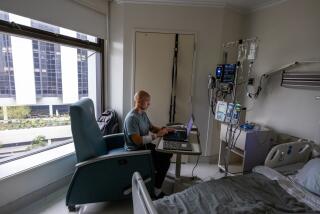Swedes implant tissue-engineered vein in 10-year-old girl
Swedish researchers have, for the first time, implanted a tissue-engineered vein made from her own stem cells into a 10-year-old girl. The implant of the portal vein had to be repeated after a year, but the team reported that the new vein dramatically improved the young girl’s quality of life, allowing her to grow taller, gain weight and begin exercising.
The portal vein drains blood from the intestines and spleen to the liver, and blockages, which are usually genetic in origin, can cause serious medical complications such as enlarging the spleen and stunting growth. It can even be fatal. Normal treatment is to transplant a vein taken from the leg or the deep neck, but surgery to remove the vein can cause limb problems. The transplanted vein can also lead to loss of the liver and the need for an organ transplant.
Researchers have also been working with artificial veins made of Dacron or polytetrafluoroethylene, but have encountered problems with those as well. The synthetic grafts often fail, particularly if the vein is small.
A team from the University of Gothenburg headed by surgeon Dr. Michael Olausson took a segment of groin vein a little under 4 inches long from a cadaver and removed all the tissue cells, leaving only the protein scaffolding. The team simultaneously removed bone marrow stem cells from the girl and grew them in the laboratory to produce endothelial and smooth muscle cells, the primary constituents of blood vessels. The cells were then seeded onto the scaffolding and allowed to proliferate. The entire procedure took about two weeks.
The team reported in the journal Lancet that they then used the engineered vein to bypass the blockage. Improved blood flow was immediately noted and the girl had no complications from the surgery. In the year following the surgery, she grew nearly 3 inches and her weight increased by 10 pounds. She was able to take walks of up to nearly two miles and began participating in light gymnastics. A year after the procedure, decreased blood flow in the vein was noted and the procedure was repeated. She has since continued her improvements.
In an editorial accompanying the report, researchers from University College London noted that the procedure might be too time-consuming and expensive for routine use. They also noted, however, that some companies are now beginning to offer decellularized matrices that could be used by researchers, shortening the time required. They called for larger-scale clinical trials to prove that the procedure really is safe and effective.
LATimesScience@gmail.com
Twitter/@LATMaugh






